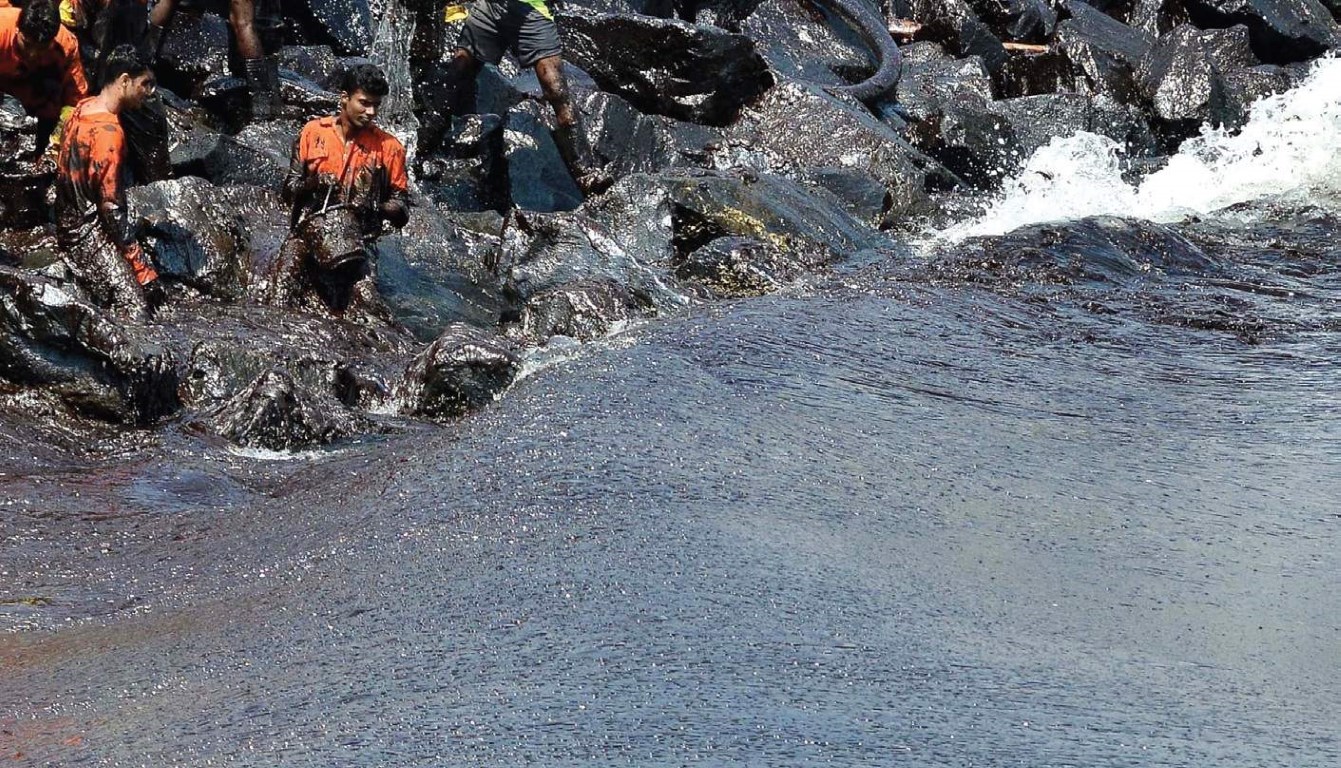Chennai oil spill
February 6, 2017 | Expert Insights

What are the actual consequences of the disaster?
On the 28th of January, two oil tankers collided of the coast of Chennai at the Ennore Port; spilling an estimated 80 tons of oil and sludge into the ocean. The spillage was initially confined to 7 Km of Chennai’s coast but progressively increased to 13 Km by 4th February 2017, and is now estimated to extend to 24 Km.
What was the cause of the collision?
The normal safety precaution for ships coming in and out of Ennore, is to be in constant communication as to their whereabouts but in this case, there was none. Unbeknownst to both ships, they had committed to the exact same route and by the time they realized it was too late. They collided and the entire cargo of POL and sludge exited through a 7-8-meter hole created by the impact which was beneath the surface of the ocean.
What is the immediate impact of the crash?
- The whole of Marina Beach has been closed off to deal with the environmental disaster. Fishing has ceased due to both health concerns over fisherman diving into the ocean and the consumption of the fish.
- Fisherman have complained that the oil itself has formed a layer on top that is not allowing their nets to breach the surface of the ocean. Also, the public has stopped buying fish because of pollution concerns. Fish have been washing up on shore and four dead Oliver Ridley sea turtles have been washed up on shore; encased in oil. Fears have arisen over a disruption in their mating season.
Measures taken by various departments
The spills effect was assessed by the Coast Guard and Chennai Metro Water department (CMW). The shoreline has been divided into four zones for the clean-up operation. NGO’s and the State Pollution Control Board have mobilized personnel to help. The CMW has deployed super suckers which are machines with long tubes to remove sludge and oil and remove it safely. Helicopters from the Coast Guard are monitoring the effects.
Assessment
The super suckers proved to be ineffective as they took out more water than oil and now more manual removal is taking place. There was no immediate response with the CMW and Coast Guard who took more than 24 hours to come out with a plan as to how to remove the oil. This highlights the lack of preparation to deal with environmental disasters in the country and a lack of suitable technology. Government officials have estimated it will take another 3 days to clear completely.








Comments